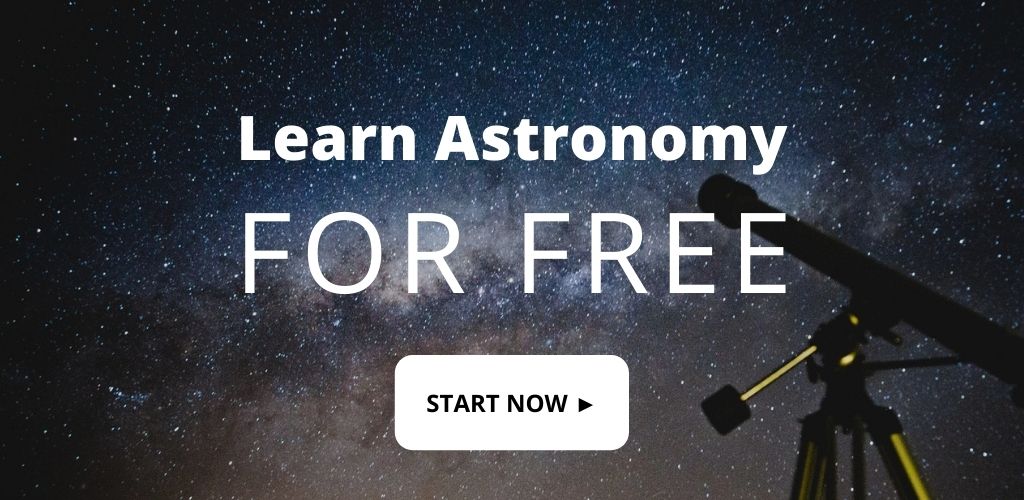
Become an amateur astronomer in the best way by buying the telescope that suits you ! Images of the universe can be found everywhere, but it is only natural for people who are interested in astronomy to want to observe celestial objects by themselves, and this can be done with the help of a good telescope.

Let’s start by addressing the problem of the expectations of beginners. These incredible, clear and colorful images of the cosmos, obtained by space telescopes like Hubble, were captured using sensitive and computer-enhanced CCD chips. The human eye is not as good at producing images. The larger the primary mirror or the lens of the telescope, the better will be the colors and details you will see. Choosing a telescope can be a tricky prospect, but the most important thing to remember when you buy a telescope is its optical quality.
Some technical notions to choose a telescope
A Newtonian reflector associated with a manual azimuthal mount (called “Dobson”) is a good option to start because it offers a good aperture. Dobsons are ideal if you want to learn how to find your bearings in the sky in the “old fashioned” way. They collect a lot of light and produce sensational images. Newtonian reflectors (and refractors) are more expensive with an equatorial or computerized mount. There are various types of this kind of mounts : Dobson (push-to-GoTo system), single-axis (Follower or GoTo) and German equatorial (GoTo). A computerized Dobsonian with a push-to-go system costs about twice as much as a manual Dobsonian, while a high-end Newtonian reflector mounted on a computerized German Equatorial might cost ten times more.
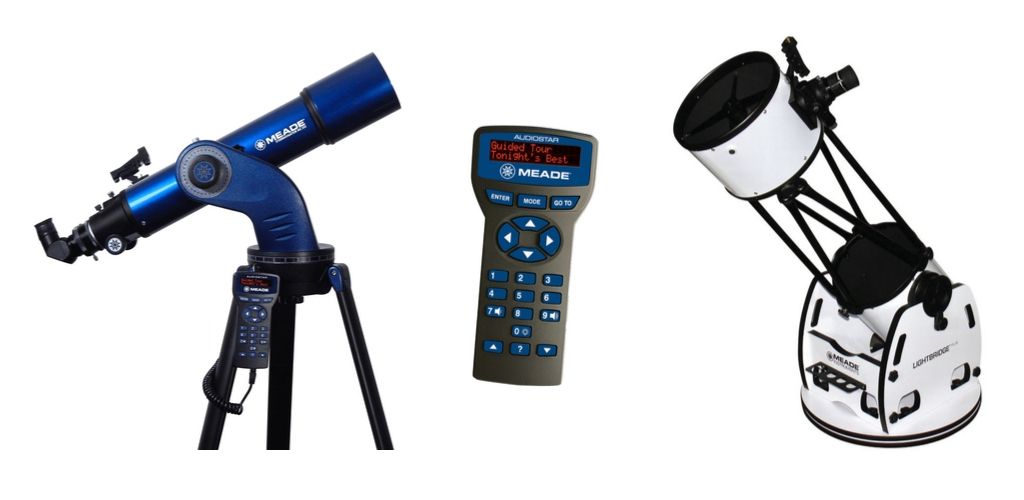
Choose an easy-to-use telescope to begin in astronomy
If you are looking for an easy-to-use telescope, a refracting telescope with a short focal distance up to 4 inches in diameter will be appropriate, or a catadioptric telescope (Schmidt or Maksutov-Cassegrain) with up to 5 inches in diameter with a computerized mount. Both will allow you to observe deep sky objects as well as discover details of the Moon and planets. Short focal length achromatic refractors show some false colors around the edges of shiny objects. Nevertheless, the apochromatic refractors have the best image quality but they are about four times more expensive than equivalent size achromatic refractors. Whatever telescope you choose, nothing prevents you from bringing down the night sky’s stars.
Reflectors VS Refractors
Reflectors
Reflectors use mirrors to collect and focus the light. The primary mirror is parabolic in order to focus the incoming rays of light at one point and the secondary mirror returns them into the eyepiece. They are usually cheaper than refractors but they are fragile and their alignment is easily maladjusted after a shock.
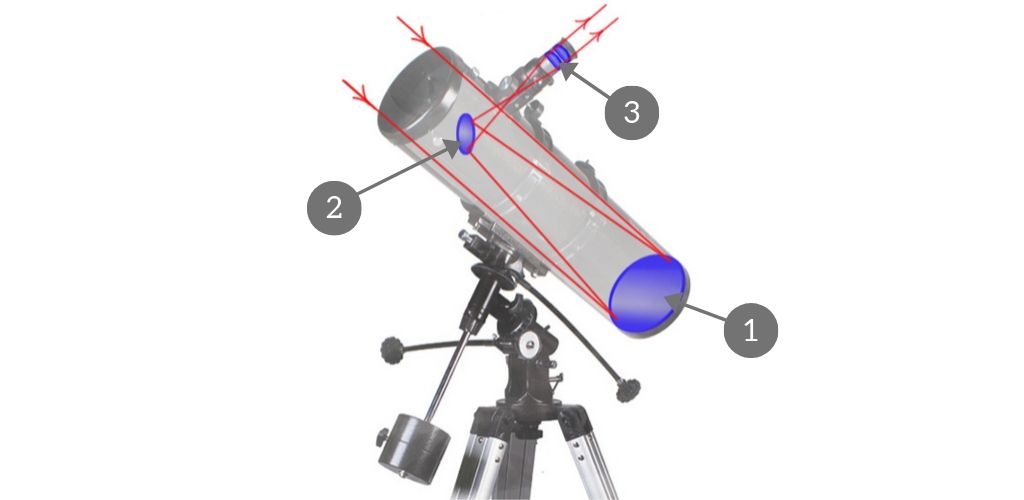
Refractors
The refractors deflect, or refract, the light when it enters through the front of the telescope, thanks to a lens that collects and concentrates the light. Refractors are more resistant because they stay aligned even if they are shocked. However, they are longer than reflectors, in order to minimize occasional visual defects due to refraction.
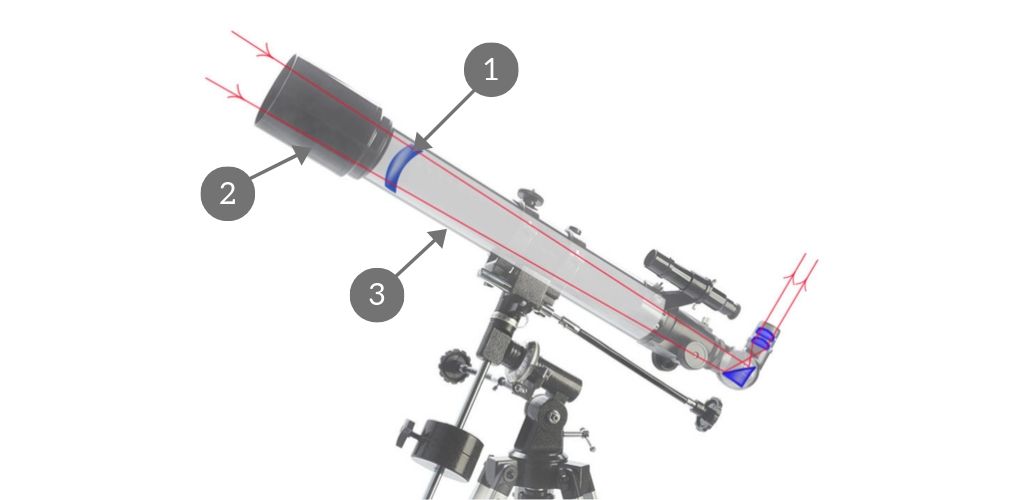
Anatomy of a telescope
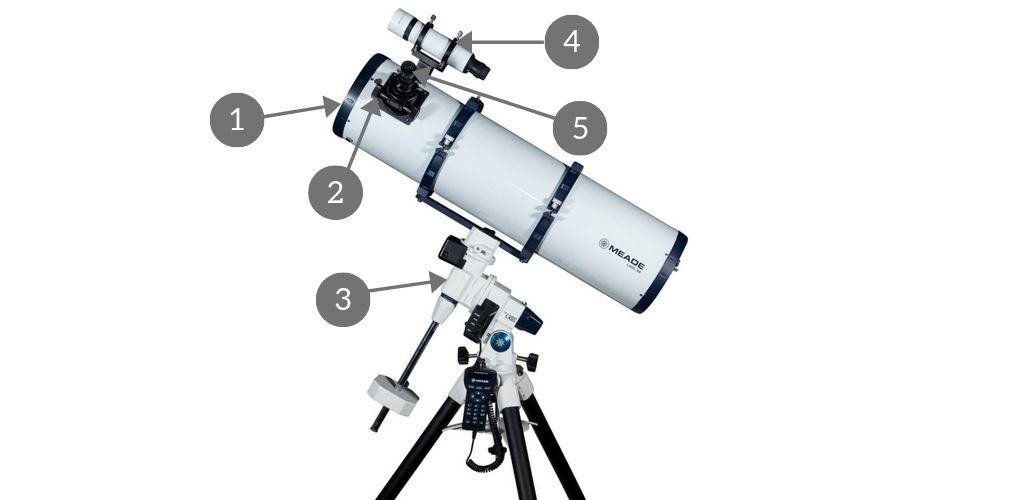
1) Aperture
The aperture of a telescope indicates the size of its primary mirror or of the lens. Larger apertures produce sharper and more detailed images and reveal less bright objects.
2) Eyepiece holder
When inserting an eyepiece into the telescope, it has to be moved in or out to precisely focus with the eyepiece holder. There are several types of eyepiece holders, such as basic friction eyepiece holders, rack and propeller, or more advanced eyepiece holders like the Crayford and the electronics eyepiece holders.
3) Mount
The mount of a telescope keeps it stable during the sky observation. The astronomer can also freely move the instrument, either by manually pushing the tube, turning the screws, or using an electronic control, to keep a centered object or to observe another celestial object in the sky.
4) Finderscope
Aligned on or attached to the main telescope, the finderscope is a low magnification instrument that is used to point the telescope to center the object to be observed in the field of view. Among the different types of finderscope, there are digital finderscope for the naked eye (red target or reticle) and finderscope with reticle that can zoom.
5) Eyepiece
The eyepiece enlarges the light concentrated by the primary mirror or the lens to produce an image. There are all kinds (the Plössl are the most commonly used), with different focal lengths, different apparent fields of vision and tube diameters (1.25 inches or 2 inches).
